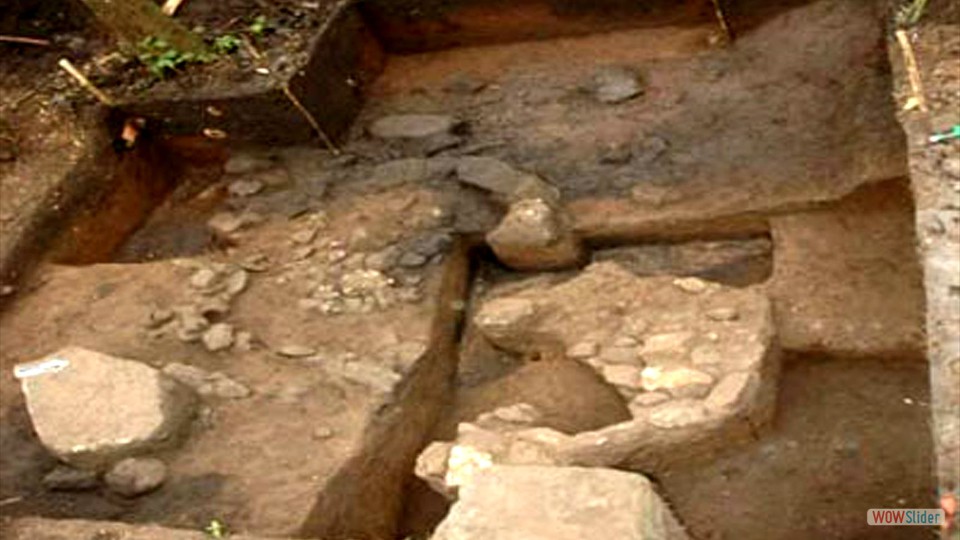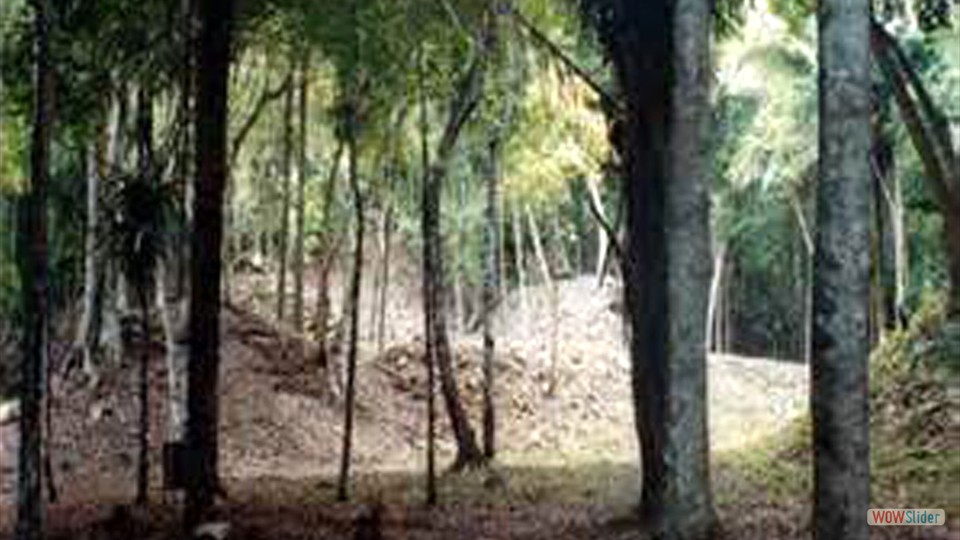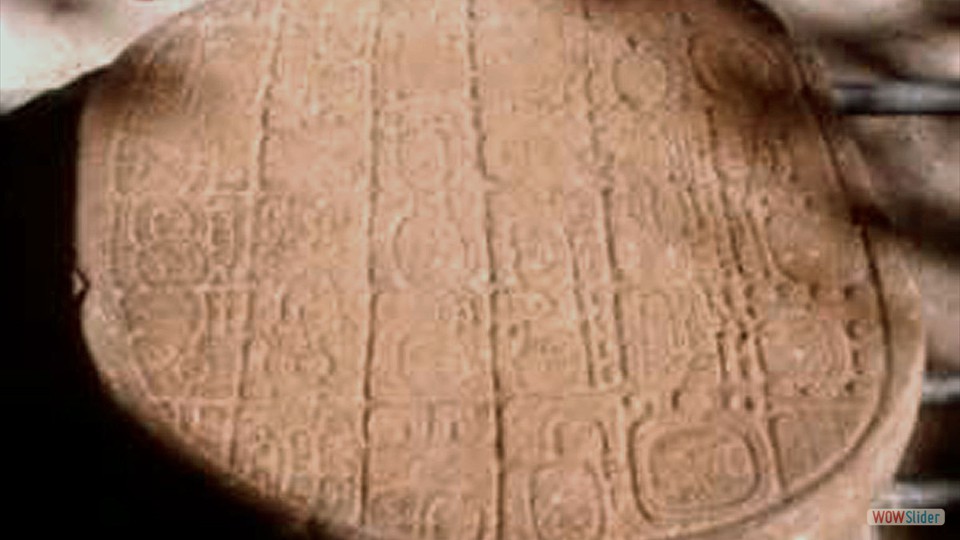El Naranjo is an ancient city of the Maya civilization in the Peten Basin region of the central Mayan lowlands. It is located in the present-day department of Peten, Guatemala about 10 km west of the border with Belize. It was the capital of the Classic Mayan kingdom of Saal The ancient Classic Mayan language name for the city was Wak Kab'nal and Maxam. The divine owner of the city, its patron, and the founder of the dynasty was a deity with a yet-undeciphered name, nicknamed "Black Square-Nosed Beastie" (possibly read as Ik' Miin) The history of Saal is highly interesting in terms of several major disturbances in the dynastic rule when allegiances and identities of local kings were subject to change. Nothing is known about the Early Classic history of Naranjo. The sites of La Sufricaya and Holmul to the north of Naranjo were involved in the establishment of the new political order in Peten after the arrival of Siyaj K'ak' (Siyah K'ak') in C.E. 378. It is plausible to assume that Naranjo might also be under the sway of Siyaj K'ak's hegemony and later Mutal (Tikal) rulers. If there were any monuments from that time, they were destroyed and/or cached. There was a sudden outburst of inscribed monuments in the reign of Ajwosa Chan K'ihnich (C.E. 546-615) who acceded to the throne as a vassal of another Maya 'superpower' Kanal (Calakmul and Dzibanche) about the time when it expanded its political influence at the expense of Mutal. However, within the next three generations of rulers, Saal did not prove to be a faithful vassal and was subject to attacks by Kanal and its major vassal, K'antu' (Caracol). It seems that one of such attacks resulted in a complete interruption of the royal line of Naranjo about C.E. 680, what led to a re-foundation of the dynasty by Calakmul that orchestrated a marriage between a princess from the line of the rulers of Dos-Pilas (Calakmul vassals and claimants to the throne of Tikal) and an unidentified nobleman, maybe of local Naranjo origin. The princess gave birth to the next king of Naranjo and de facto ruled the kingdom of Saal for quite some time in her own right as a queen-mother. It seems that at that time the kingdom reached the peak of its influence that extended from Lake Yaxha to Western Belize (west-east) and from Holmul to Ucanal (north-south). However, as the power of Calakmul waned, rulers of Saal had to confront a resurgent Mutal and that confrontation ended in a complete defeat of Saal in C.E. 744. However, Naranjo once again rose as major regional power in the last quarter of the eighth century C.E.. Eventually, the kingdom fell in the mid-ninth century C.E. for reasons that are not yet understood. The regal-ceremonial core of the site of Naranjo, the seat of its rulers and the houses of its gods, is about 1 km and includes over 112 structures grouped in six triadic complexes, two palace compounds, one E-group and two ball courts. The site was rediscovered by Teoberto Maler in 1905. He spent 3 months exploring, mapping, and photographing the site. In the 1910s further investigations of the site were made by Sylvanus G. Morley and Oliver Ricketson. There are 45 carved and inscribed monuments most of which were documented by Ian Graham who also mapped the central area of the site. Naranjo was one of the earliest sites to suffer from large-scale looting, as sculptures were illegally removed for sale to collectors. By the 1920s, many of the ancient sculptures had already disappeared. The problem worsened during the 1960s, when many of the site's large sculptures were smashed into fragments by looters in order to remove and sell the fragments. Some of the city's monuments are known today only from photographs taken by the early explorers; even when the looted monuments are subsequently brought back into circulation, their uncertain provenance makes it very difficult for them to be placed in an appropriate context. European and North American collectors continued to support the removal of artifacts from the site, the problem intensifying during and after the Guatemalan civil war of the 1960s and 1970s. It is claimed that the military governments of the time were complicit. Even now, archaeologists excavating the site are from time to time forced to abandon their work because of the lawless activities of the well armed looters.






 1
1 2
2 3
3 4
4 5
5